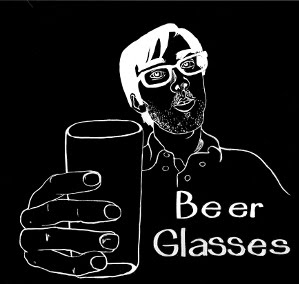
I used to think that I hated Belgian Beers. I thought they were all sweet and “yeasty”. I would avoid them at all costs which was a crummy strategy. Often, at the beer store, If I saw a cork in a beer bottle and I would skip right over said beer. I probably missed out on some good special releases because of my unfounded prejudice. It wasn't until I brewed a Belgian style clone beer that I realised I actually like Belgian beer. This was the Witcap Pater Abbey Single Ale. With 40 plus bottles of the stuff sitting on my shelf I was forced to drink it or spend the night sober (a scary thought). This beer opened my eyes. Belgian beer is not what I thought it was. Although considerably less bitter then American beer, Belgians can be pale ales. Belgians can be dark beers. There are many, many facets to the Belgian style, and boy was I missing out. These beers have a world wide reputation for there use of spices such as coriander and orange peel, and their equally spicy yeast strains. The ASA used these traditional spices.

I will say, what I still am not very fond of beer containing wheat. Even American style beers with wheat turn me off. I was at a brew pub (that shall remain nameless) recently that had an ESB on tap. I figured it was going to be a typical British bitter beer. Like a pale ale, but not as dry. Boy was I wrong. Although it had some good hop bitterness, nice hoppy aroma, and an ABV over 7% the one thing that really jumped out at me was the use of wheat. I couldn't get past it. It ruined the beer for me. Maybe someday I will understand wheat in beer, but for now wheat and I just don't seem to see eye to eye.
So below I will give a few definitions and examples of Belgian and German wheat styles because I always get them mixed up. This was the original idea for this beer blog post. Also, my new years resolution (I realize its kind of early) is to try every possible Belgian style with the goal of conquering Belgian beer by the close of 2010.
Witbier- This is basically what I thought all Belgian beer was. This is a Belgian white beer. It appears white because of suspended wheat proteins in the beer that give it a cloudy white appearance. These beers are brewed with spices like many Belgian styles and are unfiltered, hence the cloudiness.

Hefeweiss- Basically the German counterpart of the witbier, only brewed without spices because of Reinheitsgebot (the German purity law, more on that at a later date). The name literally translates to yeast white. Much sweetness, much less hops.

Kristalweiss- A filtered German wheat beer.

Dunkelweizen- A dark wheat beer from German. Probably closer to a traditional hefewiess than beers that are being brewed in this day and age. The difference is that dark malts are used such as Vienna or Munich malt.

As you can see, wheat may be more of an explicitly German ingredient and may not really characterize the Belgian style. I'll have to do some heavy research, which basically means some heavy drinking in order to fully grasp the Belgian style and its relevance in today's hop heavy American market. Stay tuned.

























